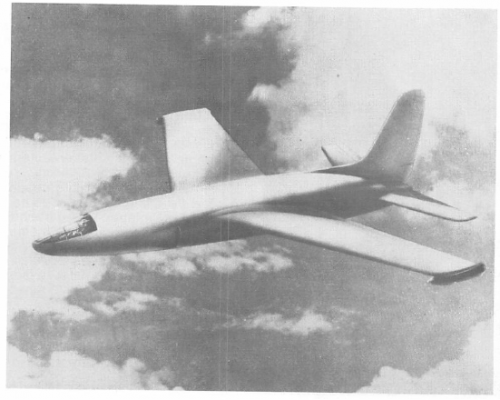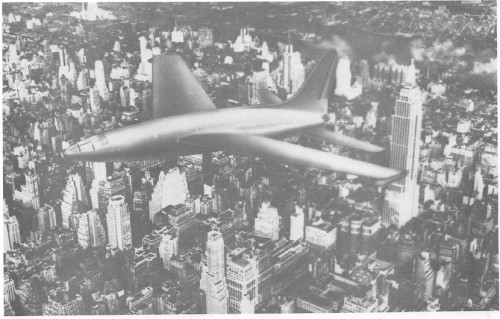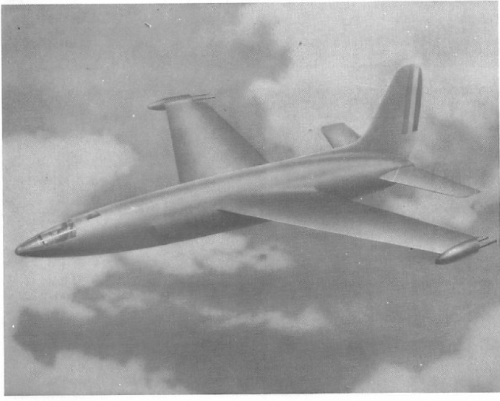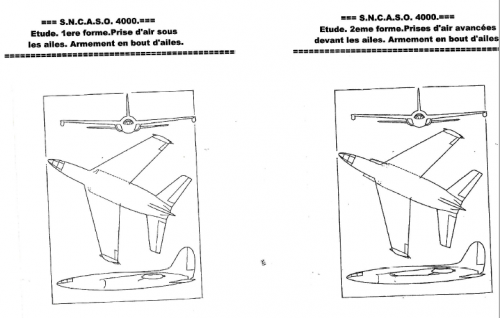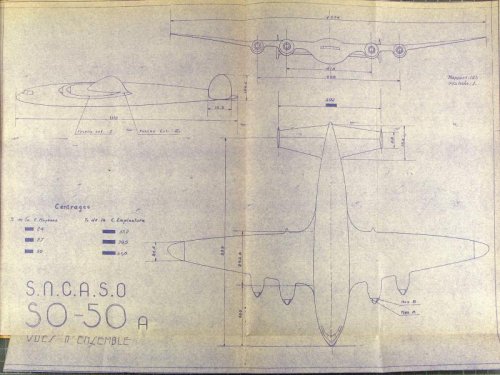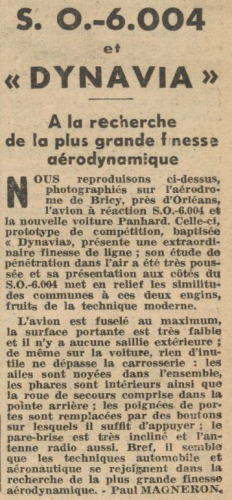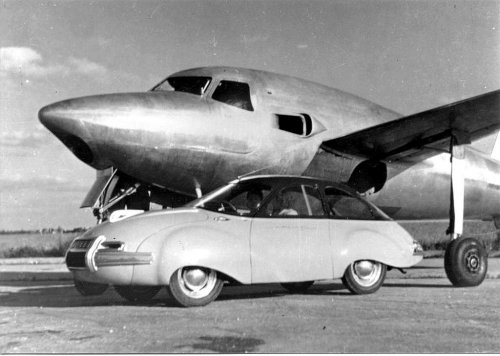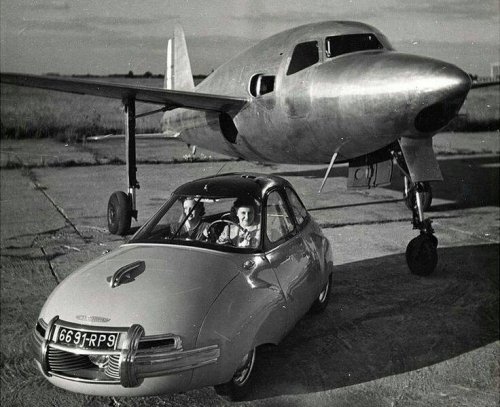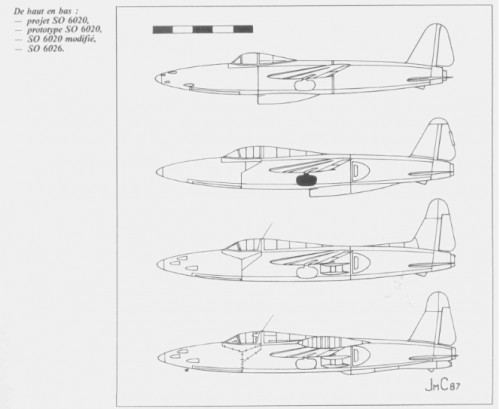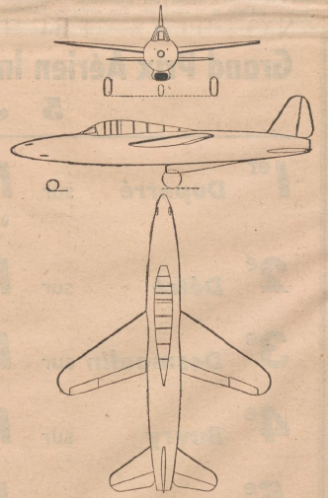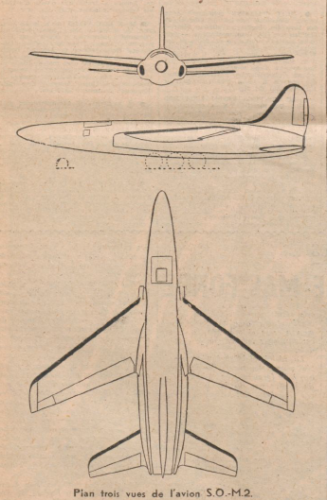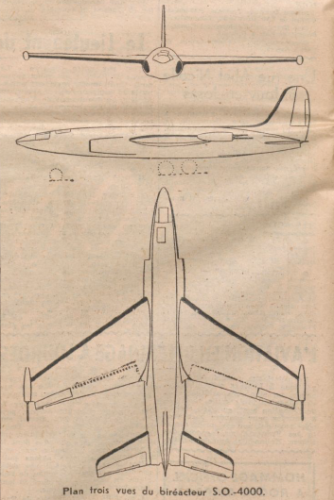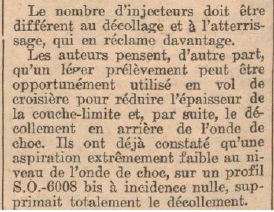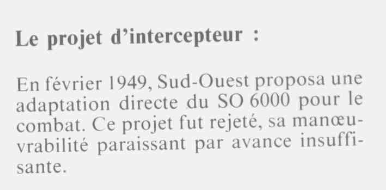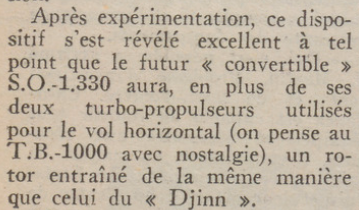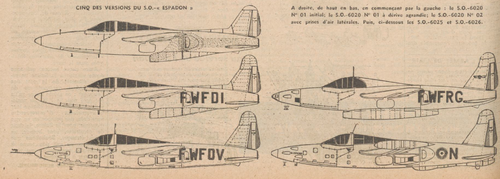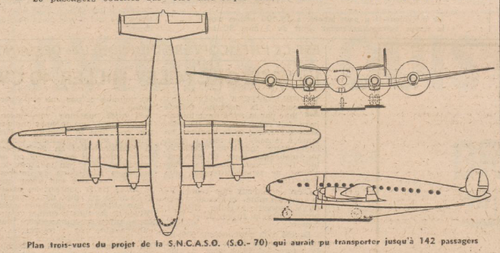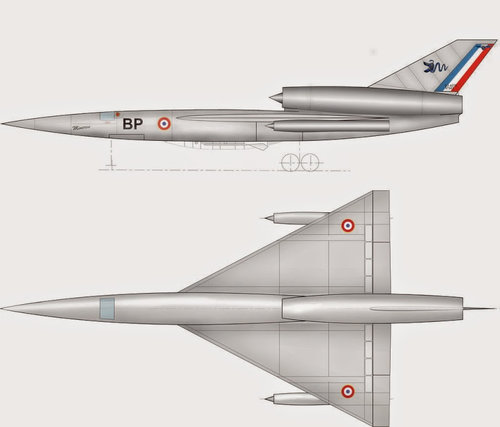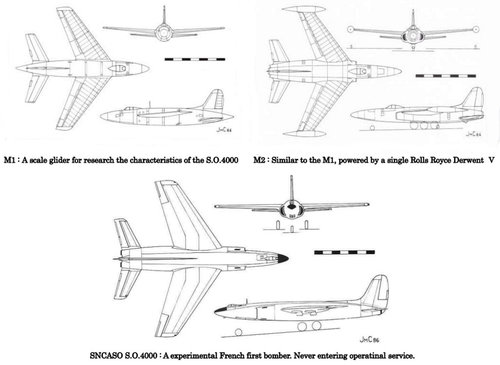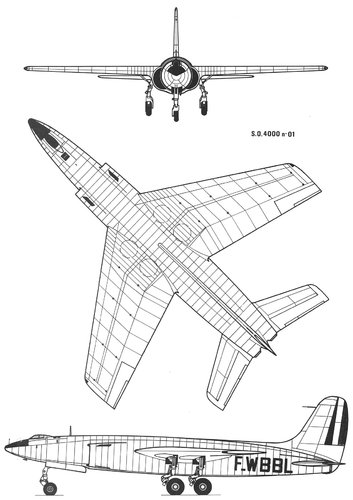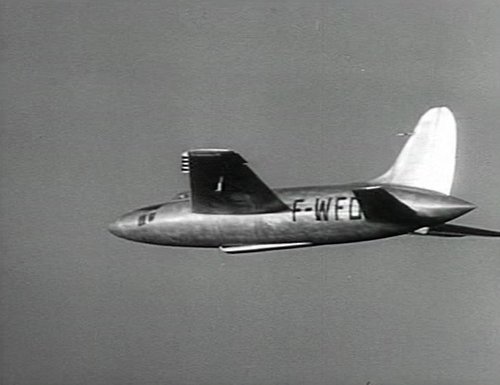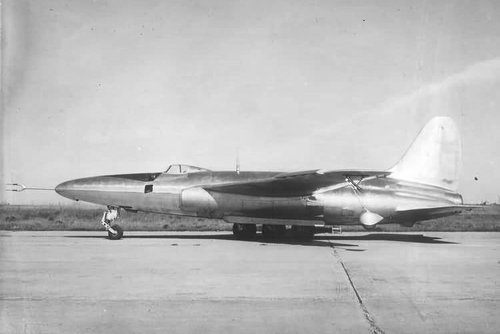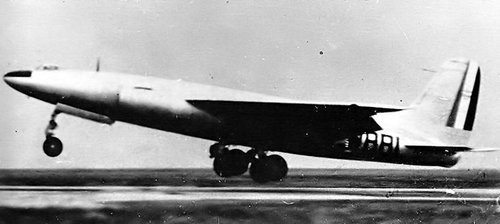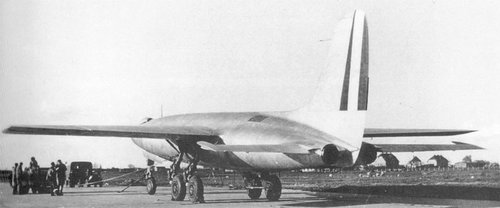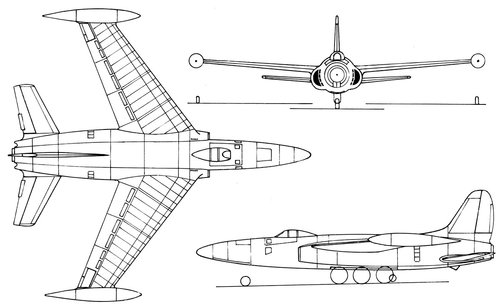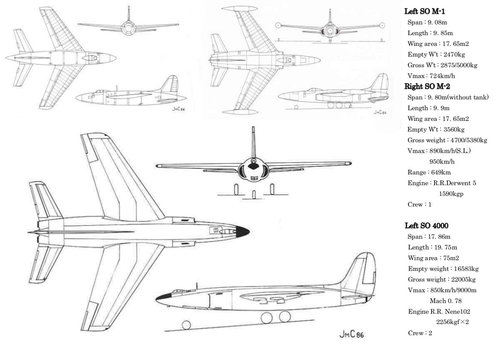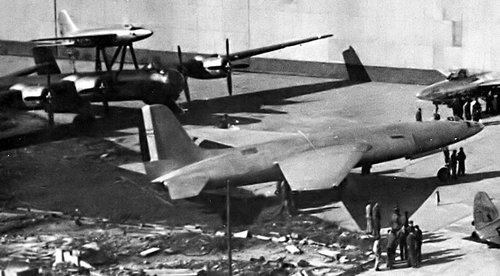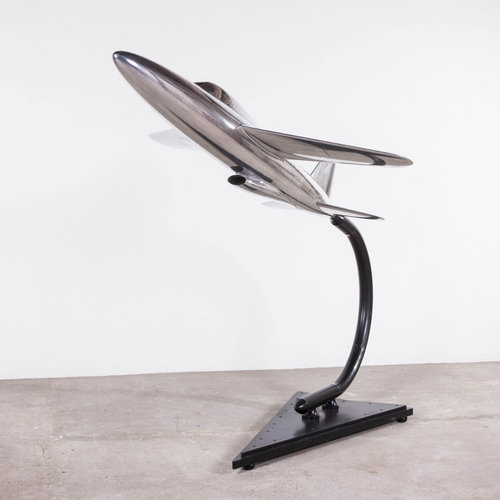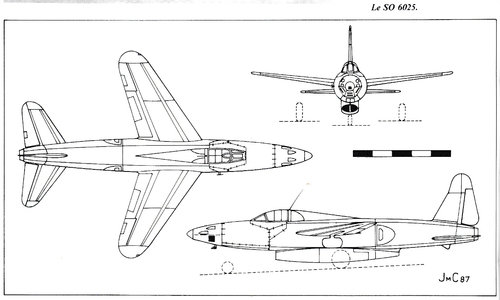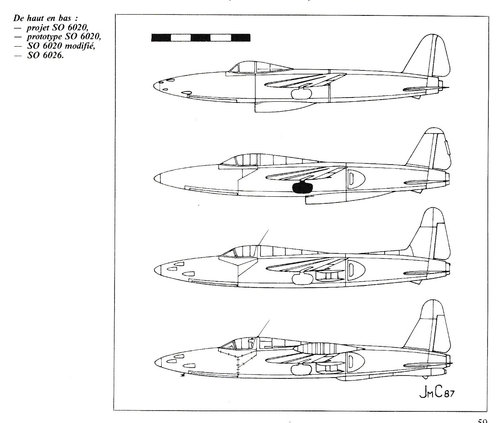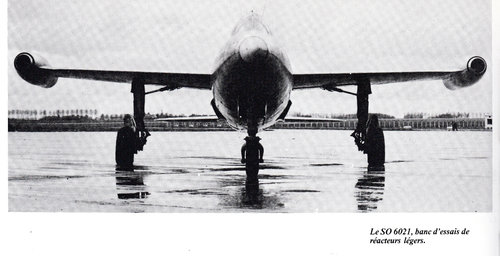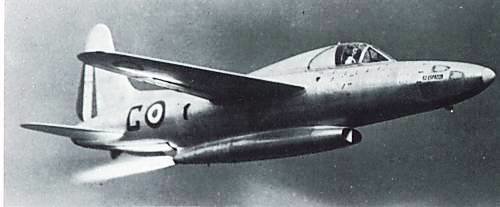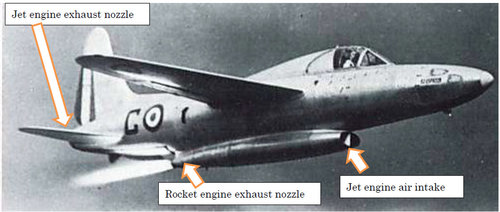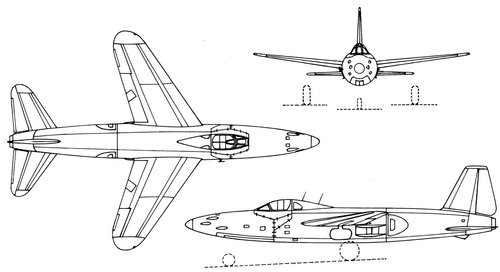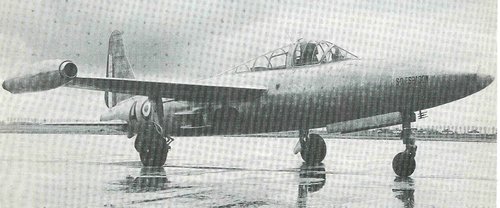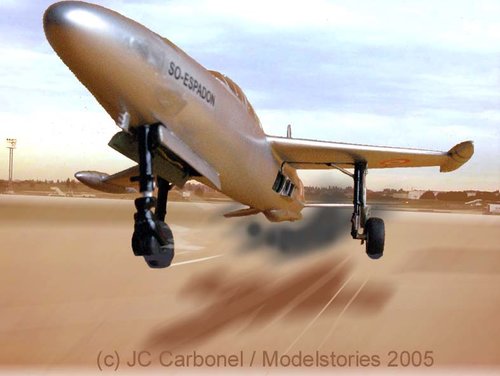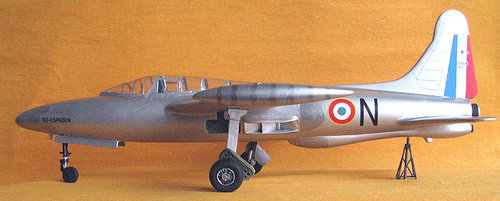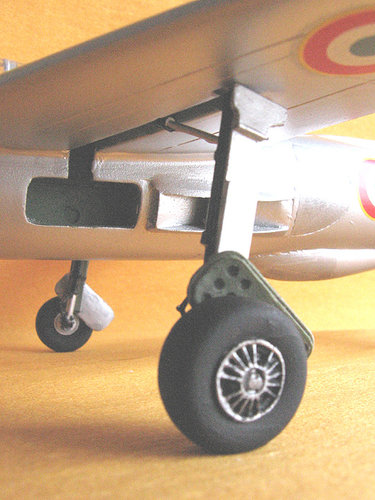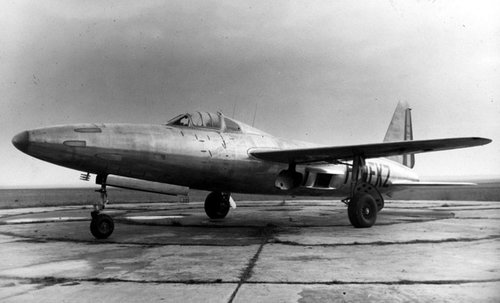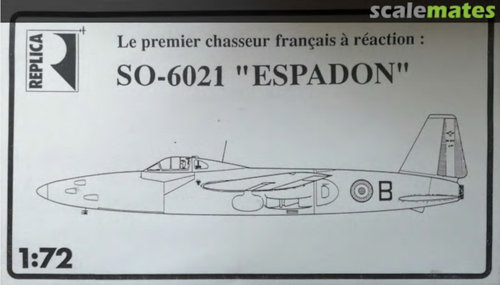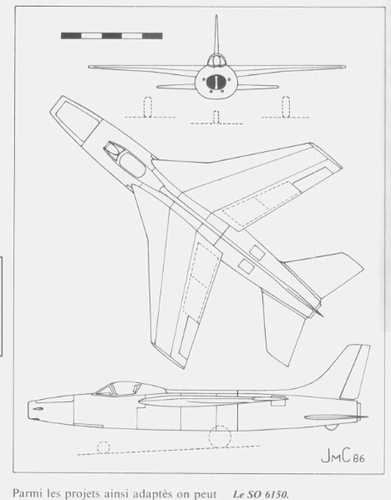Hi!
SNCASO SO4070 Minerve supersonic bomber.
Engine : SNECMA Super ATAR(8500kgp)×1, Nord designe ramjet×2
Length : 23.6m, Span : 11.83m, Height : 6.65m, Wing area : 58.5 square meter
Empty weight : 13.78ton, Gross weight : 33ton
Vmax : Mach3, Range of action : 2500km×2, Ceiling : 23000m
"Designed in 1957 to reach speeds of the order of m = 3 to 3.5, this aircraft would have been radically different from the 4060.
Despite the adoption of a delta wing, it would not have been more advantageous and comparable to the dassault mirage.
Its delta wing, extremely thin would indeed have been mounted high on a very long pointed fuselage of only 1.69m in diameter.
A single SNECMA SUPER ATAR jet engine, with an air inlet with a movable body, would have been mounted above it and two detachable, releasable ramjets would have been hung on the wing, for high speed flight.
The monotrack lander would have included a central bogie and a front dolly retracting into the fuselage.
To take into account the kinetic heating, structure either in stainless steel or in titanium was already proposed.
This project was very ambitious.
It seems certain that the announced performance could have been achieved.
It is however surprising that(,despite the study of the remarkable Michaux Sud-Avion system,)to avoid the difficulties inherent in the installation and use of aiming radars, a radio guidance system of questionable precision was only planned.
It would in any case have made it possible to reduce the crew to one man, practically reduced to the role of conveyor of the machine During the return flight!
With a load of 1000kg (the bomb from the 1956 program) the SO4070 could have attacked an objective located at 200km, by flying at M = 3 at an altitude between 22 and 23000m.
On a reconnaissance mission the radius of action would have been slightly increased.
The possibility of the development of such a second generation supersonic bomber was one of the arguments put forward by Sud-Aviation to try to save at least the second prototype of S0 4060 during the dark coupes of 1957: this aircraft could have served flying test bench for the Super ATAR
We never heard of it after the spring of 1958."
(from Jean Cuny "Les Avions De Combat Francais 1944-1960" volume II,Docavia)
And
https://fr.audiofanzine.com/le-pub-...-belmoufles-chouettes-coucous-land,p.405.html
I can't find main engine air intake shock cone in plan view drawing.
How can the pilot of this airplane secure forward visibility for takeoff and landing?



